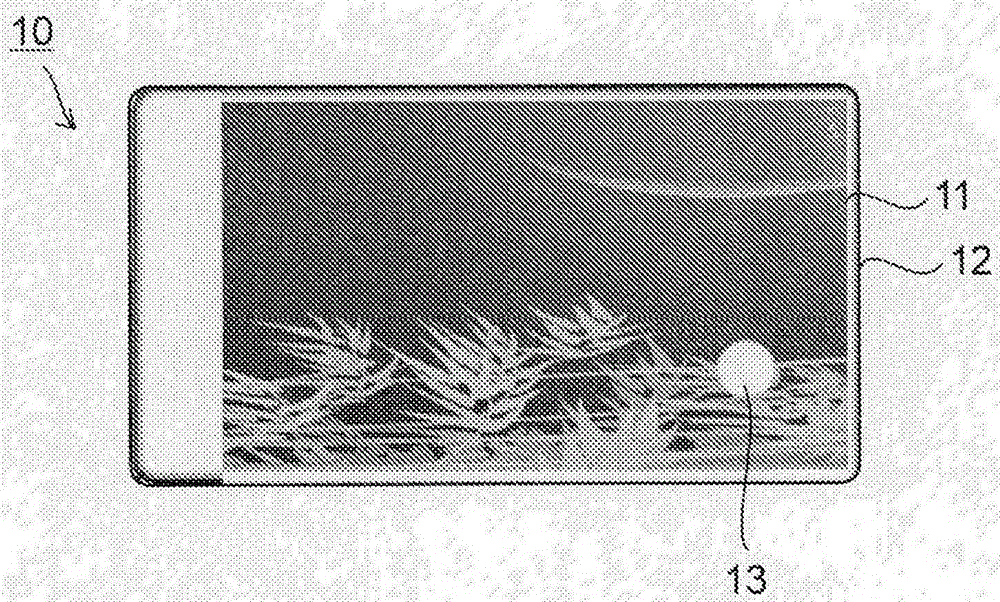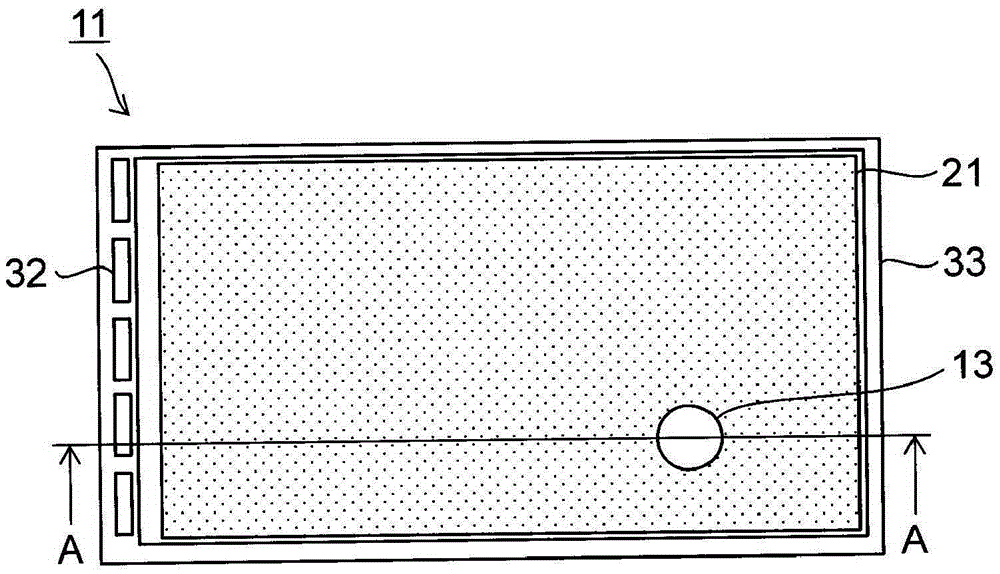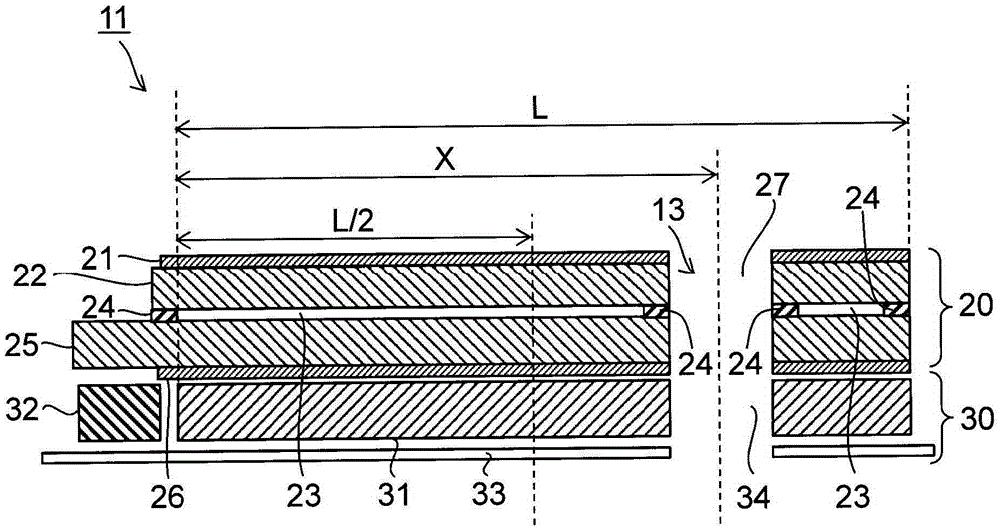Display device
A technology for display devices and light exit surfaces, applied in light guides, optics, and filters for photography, etc., can solve problems such as uneven brightness and achieve the effect of reducing uneven brightness
- Summary
- Abstract
- Description
- Claims
- Application Information
AI Technical Summary
Problems solved by technology
Method used
Image
Examples
no. 1 Embodiment approach >
[0042] figure 1 It is a plan view of the display device of the first embodiment. This display device 10 is a smartphone and includes a display unit 11 and a housing 12 surrounding the display unit 11 . Furthermore, a non-display area 13 in which video is not displayed is formed in a part of the display unit 11 . In addition, the number of non-display regions 13 is not limited, and two or more may be formed.
[0043] figure 2 is a plan view showing the configuration of main parts of the display unit 11, image 3 yes figure 2 An example of the A-A line sectional view. The display unit 11 includes: a liquid crystal panel 20 which is a gate device; and an edge-light type backlight 30 .
[0044] The liquid crystal panel 20 is composed of laminating an upper polarizing plate 21, an upper substrate 22 sandwiching a liquid crystal layer 23, a liquid crystal layer 23, a sealing member 24 sealing the liquid crystal layer 23, and a lower side sandwiching the liquid crystal layer...
no. 2 Embodiment approach >
[0059] Image 6 A cross-sectional view is shown in , which shows the configuration of main parts of the display unit in the display device according to the second embodiment. The second embodiment is different from the first embodiment in that there is no hole portion 27, and the other configurations are the same as those of the first embodiment.
[0060] Such as Image 6 As shown, the liquid crystal panel 20 has no holes formed therein. The portion of the liquid crystal panel 20 facing the opening 34 is configured to be normally white (transparent when a voltage is applied) or to be transparent when a voltage is applied to obtain transmittance. With such a configuration, the non-display region 13 also has transmittance as in the first embodiment. Therefore, also in the second embodiment, the same effect as that of the first embodiment can be obtained.
no. 3 Embodiment approach >
[0062] Figure 7 A sectional view is shown in , which shows the configuration of main parts of the display unit in the display device according to the third embodiment. The third embodiment differs from the first embodiment in that the hole portion 27 is formed only in the lower polarizing plate, and the other configurations are the same as those of the first embodiment.
[0063] Such as Figure 7 As shown, the hole portion 27 is formed by penetrating through the portion of the lower polarizing plate 26 that is opposed to the opening portion 34 . Also in this embodiment, as in the second embodiment, the portion of the liquid crystal panel 20 facing the opening 34 has a normally white structure or a structure that becomes transparent by voltage application in order to obtain transmittance. With such a configuration, the non-display region 13 also has transmittance as in the first embodiment. Therefore, also in the third embodiment, the same effect as that of the first embodi...
PUM
 Login to View More
Login to View More Abstract
Description
Claims
Application Information
 Login to View More
Login to View More - R&D
- Intellectual Property
- Life Sciences
- Materials
- Tech Scout
- Unparalleled Data Quality
- Higher Quality Content
- 60% Fewer Hallucinations
Browse by: Latest US Patents, China's latest patents, Technical Efficacy Thesaurus, Application Domain, Technology Topic, Popular Technical Reports.
© 2025 PatSnap. All rights reserved.Legal|Privacy policy|Modern Slavery Act Transparency Statement|Sitemap|About US| Contact US: help@patsnap.com



